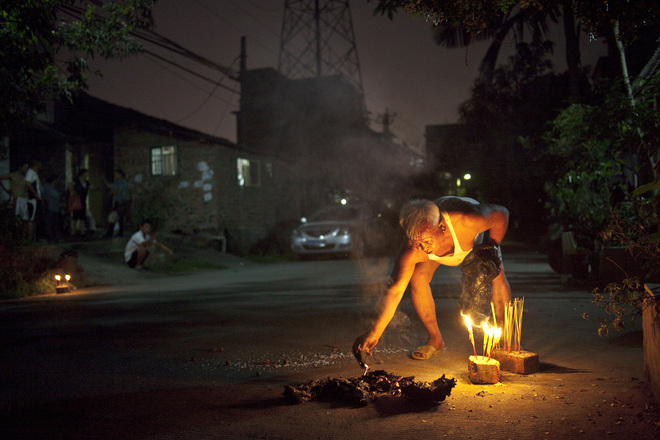Essential Tips for Improving Your Portraiture Photography
14th Jul 2015
1. CONSIDER PERSPECTIVE
How you choose to photograph a scene can have a huge impact on the narrative of an image. Perspective, both in terms of which lenses to choose and which viewpoint you choose to photograph from, will affect the overall feeling and mood you convey in your images.
Conventionally when using a 35mm camera, portrait photographs are often taken using lenses with a focal length of between 50mm and 135mm. This is because they offer a similar field of view to how we see the world so it looks natural. As an alternative, why not consider a wide-angle lens?
The most obvious reason to choose a wide lens for portraiture is for environmental portraits, where you keep your distance a little from the subject and include their surroundings.
This fantastic example by Nick Board utilizes a 12-24mm lens, set to a focal length of 12mm to really showcase the subject's surroundings and introduces a narrative within the image.

© Nick Board, Theme: 200 Faces
2. EXPERIMENT WITH EYE CONTACT
It is amazing how much eye contact can really impact an image. Often we see portraits that depict their subjects looking directly down the lens which can create a real sense of connection between a subject and the person viewing the image.
This example by Ulysse del Drago does just that and creates a real sense of connection between the person viewing the image and the subject.

© Ulysse del Drago, Theme: 200 Faces
By encouraging your subject to focus their attention on something outside the frame, it is possible to create a feeling of candidness and can generate a level of intrigue with the image.

© Harry Wakefield, Theme: 200 Faces
Another alternative to consider is to have your subject looking within the frame or looking at something (or someone) within the frame. This allows you to create a second point of focus and introduces a narrative and a relationship between the subjects.

© Nirina Kjellgren, Theme: 200 Faces
3. KNOW THE RULES, BREAK THE RULES
There are a lot of 'rules' when it comes to composition in photography and while these are useful to know and use, they are also useful to know so you can intentionally break them.
One of the most popular 'rules' in photography is the Rule Of Thirds. Photographers use the rule of thirds to position the subject of interest within the frame. Imaginary lines are drawn dividing the image into thirds both horizontally and vertically, you then place key elements where these lines intersect.
The Rule of Thirds is one that can be effective to break, placing your subject dead centre within the frame can create powerful and engaging images. Alternatively, placing your subject right on the edge of the frame can often create interesting balance and space within the image.

© Harry Wakefield, Theme: 200 Faces

© Harry Wakefield, Theme: 200 Faces
4. EXPERIMENT WITH LIGHTING
When talking about basic lighting techniques for portraiture the main five studio lighting patterns that come to mind are, paramount lighting, loop lighting, rembrandt lighting, split lighting, butterfly lighting and profile lighting. Whilst these offer beautiful results it's also great to experiment with available light sources. This stunning example by Wu Hao uses the fire as a light source and offers a great narrative to the image. Likewise, Calvin Merry's image balances available light and the light from the fairy lights to great effect resulting in a mesmerizing portrait.

© Wu Hao, Theme: Light In The Lens

© Calvin Merry, Theme: 200 Faces
5. GET UP CLOSE AND PERSONAL WITH CROPPING
Sometimes it's what is left out of an image that says more than what is included. Using a telephoto lens or by getting up close and personal with your subject you can create some really dynamic and bold images that focus on a single part of your subject. Photographing a person's hands, eyes, mouth or even just their lower body can create intrigue and allows room for interpretation by the viewer of an image.

© Dafydd Kemp, Theme: Between Here & There

© Chris Cockrill, Theme: Vernacular Photography